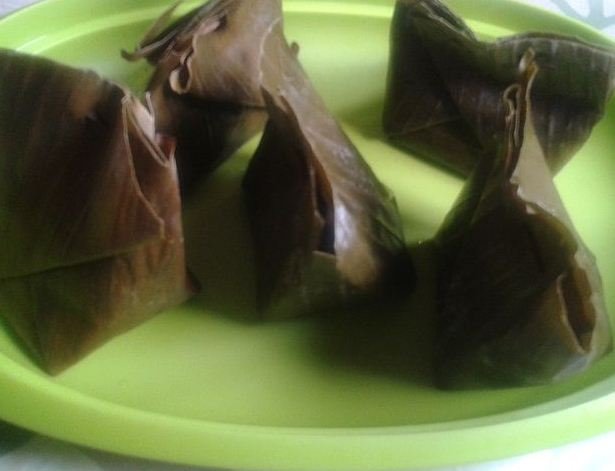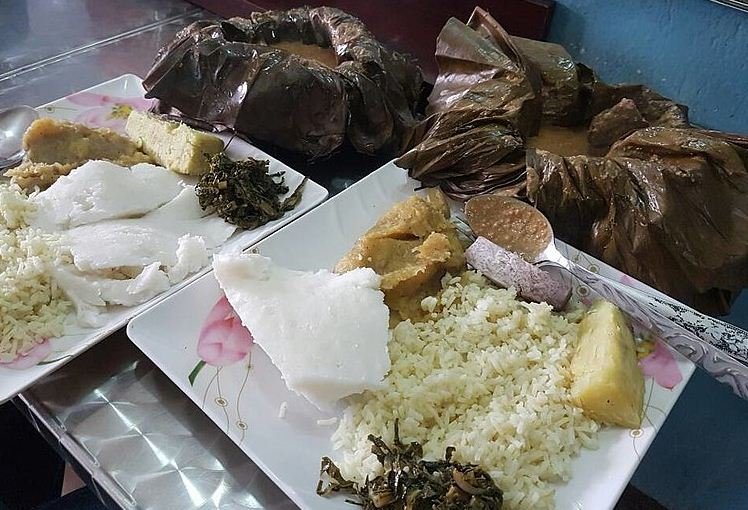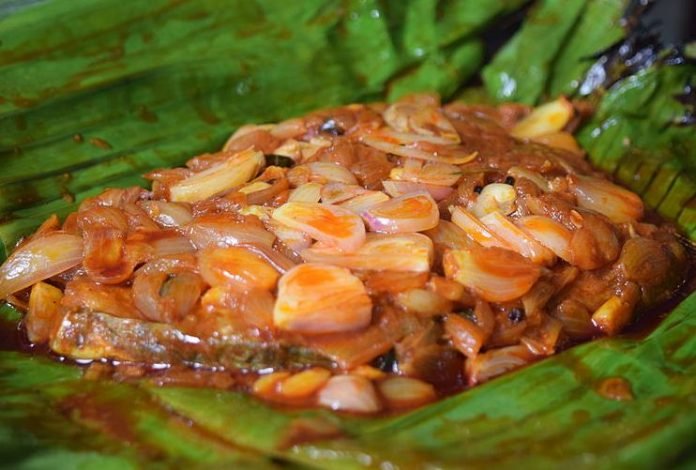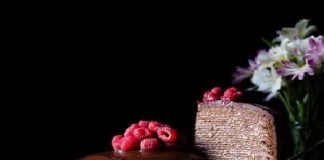Liboke ya Malangwa Fish in Banana Leaf is a Congolese dish prepared by wrapping fish fillets or whole fish on banana leaves and cooking it over charcoal fire or grill. To enhance its flavor, the fish is marinated with traditional spices for a sapid and savory taste. All the spices need to be well quantified to avoid ruining the entire meal.
One thing that makes this amazing delicacy one of its kind is its cooking method which enhances its flavor. The cooking method is popularly used in African countries like Uganda, Congo, and central Africa. Cooking food in wrapped banana leaves is known to give food a distinct flavor that nothing else in the world could give.
Is Cooking With Banana Leaves Healthy?
You may be wondering whether cooking your food in banana leaves is indeed healthy. The answer is yes. People across the world have adapted to this mode of cooking. One thing that makes banana leaves great for cooking is additional nutrition benefits. The leaves are loaded with crazy antioxidants levels which get absorbed into the food.

Though the leaf should not be directly consumed, its naturally occurring antioxidant is known to prevent cancer, heart issues and reduce the chances of developing other health complications.
Before the invention of modern food refrigeration methods, banana leaves were also used to keep food fresh. While some people use them as food wrappers, some cultures use the leaves to serve food. For example, the Yorubas in Nigeria use the leaves to serve a form of corn meal called Eko, and another one called Ogi (pap). Some enjoy using the leaves to serve moinmoin and Fufu. In short, when it comes to food preservation to maintain freshness, flavor, and taste, many cultures trust banana leaves.

Traditional dishes in Thailand, Malaysia, and Singapore are enjoyed on banana leaves. In South India, festive delicacies and wedding meals are also served in banana leaves. In Ghana, Togo, and certain parts of Ivory Coast, food like Kenkey and Dokunnu are served in leaves.
Now that you know the benefits of leaf cooking, let’s delve right into Liboke Ya Malangwa and Congolese cuisine.
Congolese Culture
Congolese culture is a mixture of traditional and that of her colonizers. While France is said to be behind the cuisine felt here, the country has managed to maintain its traditional cultural identity. Crop farming and cattle keeping are some of the cultural practices that have greatly influenced the cuisine.
Some of the foods grown include cassavas, taro, yams, pumpkins, rice, maize, plantains, sweet potatoes, tomatoes, nuts, and peas. Fish is also primarily consumed by people who live near water bodies.
Most traditional dishes comprise of one or more ingredients listed above.
When food is ready, men are served first, then women and children. Hand washing is done before and after meals, and only the right hand is used to enjoy the dish.
Food taboos are common but depend on the village or the tribe one comes from. If an animal is viewed as a totem, people from that village, clan, community, or family cannot eat that animal as it is their spiritual protector.
[bctt tweet=”In Congo, if an animal is a totem, the family does not consume it as it is their spiritual protector”]
Just like the Ashanti people, modern day Ghana, the majority of Congolese ethnic groups are matrilineal. Cousins from the mother’s side are viewed as siblings of the family. The oldest uncle from the mother’s side is given much respect, and has a greater influence to the degree that a father has on his child.
[bctt tweet=”In some Congolese communities, the old uncle from the mother’s side has more influence than the father. He takes care of the kids education, career selection, job hunting and spouse selection”]
In most sub-Saharan African countries, fathers are mostly responsible for their children’s education, career selection and job hunting, and spouse selection. In some Congolese ethnic communities like Bakongo, however, the oldest uncle from the child’s mother’s side takes up all these responsibilities.
Now let’s jump right into our recipe.
Ingredients
8 fillets of Pangasius
6 cloves garlic (minced)
6tbsp of crushed tomatoes
4tsp ground nutmeg
3 scallions (chopped)
3 bay leaves
3 hot peppers
1 chicken cube bouillon
1 fresh ginger (chopped)
Salt
8 banana leaves
-Guide-
- Crumble your bullion in a large bowl and rub your fish fillets
- Add your ginger, garlic, nutmeg, tomatoes, scallions, pepper, and salt. Mix well, so the seasoning gets well incorporated in your fish
- Wrap with a cling film and put it in the fridge for 8 hours
- Clean your banana leaves and let them dry
- Place the leaves on a flat table ensuring they overlap each other
- Remove your marinated fish and place them in the center. Place your pepper on top and add your bay leaves and close the leaf wraps with a toothpicks or food thread
- Place the fish on a baking sheet with water on the bottom to prevent the leaves from drying
- Preheat your oven 200o C and place your wrapped fish inside. Bake it for 30 minutes then serve while hot with fried plantains, white rice or ugali
If you love this Liboke Ya Malangwa recipe, you may also like:





